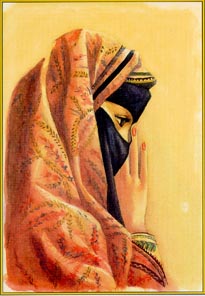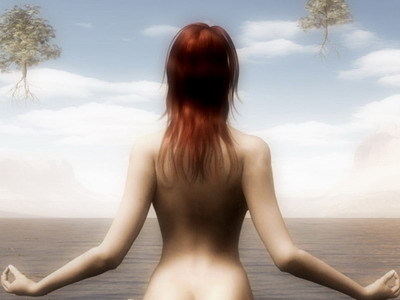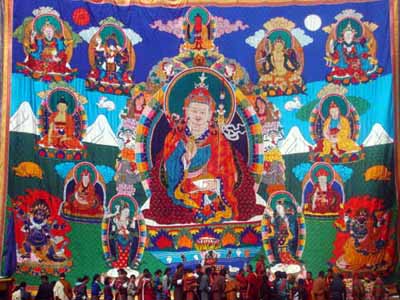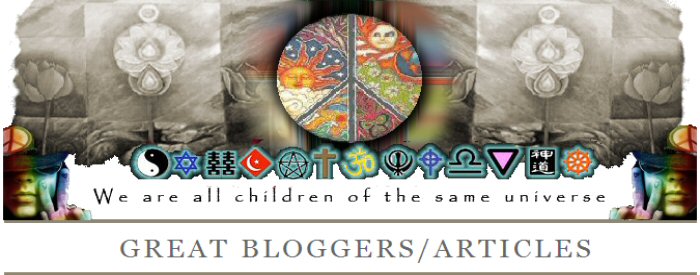Forms of prayers

Let us expand the meaning of prayer to a much larger context. This section would have to include practices like chanting, affirmations, reading of sacred texts, sacred music, praying dancing, rituals, etc.
Meditation
Meditations of the eastern religions must be considered as the highest forms of prayer. These are raja yoga of Hinduism, Vipassana of Theravada Buddhism, Shikantaza of Zen and Tibetan Dzogchen. These meditations all end up in the Void.

Affirmations
The soul is dyed the colour of thoughts said Heraclitis. However one cannot reach enlightenment or union with God with only affirmations. These are statements of aspirations in the mind conditioning therapy to be repeated as often as one is able. As an example, Dr. Emile Coue in the 1970's invented this phrase: "Every day in every way I am getting better and better." Some of the prayers in religions were originally affirmations but degenerate to rituals of supplication directed to some outside higher authority. Looking at it in another way, it is a dialogue between self and Self. 'I am beautiful, I am wonderful and I radiate perfect health!' If you repeat this affirmation often enough, you will come to believe it to be true.
Body Prayer
The body has been taken as the temple of God. The most popular form of this prayer is "yoga." Hatha yoga is one of the five yogas of Hindu spiritual practice. The physical exercises involved postures, breath control, stretching and meditation. Watching an accomplished yoga exercise leaves no doubt to the observer that it is a body prayer. In addition there are also mudras which depict hands and finger postures in meditation which cannot be interpreted as anything else except praying. This is yoking or reconnecting to God.

Chants
Chants are said to be raising our voices to God. According to Robert Gass in his book, "Chanting": "Chant is singing our prayers. Chant is vocal meditation. Chant is the breath made audible in tone. Chant is 'discovering' Spirit in sound." We have been chanting for thousand of years. It ranges from the melodic Christian chants to the Tibetan Buddhist monotone and from the Rhythmic African chants to the Jewish Liturgical ones. In the mid-1990s, the Gregorian chants have been revived to top the music charts. Buddhists and Hindus have been using the sacred word 'OM' as a seed syllable of created existence. Lately Buddhists and nuns have been making the singing of sutras as a great enticement to the Buddhist religion. They are set to music of delicate tunes. The main purpose of these chants is to vibrate the body and mind upward to spiritual realms.
Spirit Guides
Many cultures have experienced many different forms of guides. All of them can be subdivided into these major categories: ancestors or dead relatives, masters and teachers, animals, angels and spirit guides. The last include soul mates that are discarnate and we may be their guides when we die. They are not to be worshipped, but are there to guide us to go along our G-plan. Some people can contact their guides through means like meditation, intuition or question in prayers. They may then receive answers through different ways of meditation, automatic writing and dreams.
Praying-Walking and Walking Meditation
On Prayer-Walking, Linus Mundy says: "It is an exercise that considers and serves every part of the human being, the mind, the body, the spirit (or soul). It is prayer–exercise that makes it possible for us to look inside and outside of ourselves simultaneously." While walking one does the usual prayer at the same time.
All Buddhist monks and serious Buddhist must practise walking meditation. This is an exercise in mindfulness. Total attention is placed on the walking without any extraneous thoughts. The awareness is mainly on the placing of the feet on a straight, short path. One should not coincide the breath with the movement of the feet.
Praying Beads
Using beads for praying originated with the Hindus. They use a string of 108 beads to count their mantras. This method has been taken up by most Buddhists in Tibet, China and Japan, who also use 108 beads. These are called malas by these two religions. They are made of sandalwood, seeds, or inlaid animal bone. In the past, the inlaid bones were from the skeletons of holy men, but now they are made of turquoise, coral and yak bone. However, the Burmese use 72 black-lacquered beads. The Muslims use 33 or 99 beads, representing the 99 names of Allah found in the Koran.
The Catholic rosary (usually made up of coloured glass or plastic or olive wood beads) originated in the sixth century for praying of the 150 psalms of the Bible. These beads are used to count the 150 Paters ("Our Fathers) once a week and these 150 beads became known as Paternoster. Thomas of Contimpre was the first to call them rosary after Virgin Mary visited St. Dominic in a rose garden (rosarium). It is not a coincidence that the word bead comes from the Anglo-Saxon bidden meaning to pray and bede meaning prayer. Besides the calming and tranquillising effect of the beads, they are predominantly there to ground us to the significance of the prayer we are reciting. This is touching of the holy practised by all religions in the world, except by Judaism.
Prayer Dancing
Sacred dance practised as an ancient rite in the worship of God is almost universal. It originated in Greek temples, Egyptian rituals and Judaism and early Christianity. It is just as common in the East. In Hinduism, Shiva is a dancing God who helps the individual to release the soul from illusion, as it represents the rhythm of the cosmos. In Japan, the Kabuki Dance Drama was launched by a shrine maiden in the 1600s. Again this is of religious origin.
Amongst the peasant and tribal population, they perform the sacred dance for supplication for rain etc. It is also performed as thanksgiving for successful harvests and hunts. The Sioux Sun Dance held each year is a thanksgiving celebration to the Great Spirit. Finally, the Muslim Sufi dancing with its associated dervish whirls may end up in a trance of Samadhi. It is a religious act capable of converting the brain waves from alpha to theta waves. Its teachers believe that with the rhythmic and physical movements, the dancer may end up in communion with the Divine. The viewers of the dance may even be healed of their illnesses. The essence is that they are not dancing the dance, but are being danced by the dance. In practice, it is whirling the ego out of the body so that spirit may occupy the twirling body. This dancing prayer with music is an ecstatic practice towards the union with the Divine.

Rituals
All religions use rituals, whether with their prayers or not. Some Buddhist sects, Hindus praying to their deities, Christian priests, African shamans, Taoists etc use rituals. The author of "School of Kabbalah", Z'ev ben Shimon Halevi, said " The essence of ritual is that something done in the physical realm is related to the higher worlds. This may be a simple gesture of the hand or an elaborate ceremony. It can be working consciously in everyday life, so that quite mundane actions become full of meaning, or a carefully designed ritual acted out for a specific occasion…Ritual is the mode for formalising action and giving it not only meaning, but creating a contact with other worlds." Ritual when used as a prayer practice infuses a sense of the sacred when not performed by rote. With awareness it brings us nearer to a relationship with the Absolute. The trick with ritual is to remember the intention and be inspired by the myth. With intuition, ensure that the ritual harms nobody but benefits all. Keep it simple and be balanced. Be in touch with your feelings. Honour the power of the words and keep the imagination alive. These are the guidelines given by Rene Beck and Sydney Barbara Metrick, authors of The Art of Ritual. There are no rights or wrongs in ritual. If performed with intensity and in detail, one should be transformed. Do not be an automaton when acting out the ritual. So ritual can be taken as a form of prayer, as it takes you out of the present time and place.
There is a book called "The Way We Pray" by Maggie Oman Shannon in which a comprehensive account of praying practices around the world is written up. There are many more practices then what are written in this article. If the reader is interested please consult the book.

What are the results of prayer?
Larry Dossey, M.D., extensively explores the answer to this question in his books. As prayer is so ubiquitous throughout the world statistics are difficult to come by solely on prayer. So the author utilised researches on healing with regards to medical benefits. Distant healing is treated as distant prayer: in fact there is no difference as the mechanism is the same. Publications quoted in his books are all of high quality and are published in medical and psychological journals. That means they are to be trusted.








all good, would like to see a new name for religion that would enable us to all pray together, still remembering our old traditions but glowing in joy as we all shine together. peace *
ReplyDeleteCan u please explain the meaning of Raja Yoga. What are the form of Yogas
ReplyDeleteRaja Yoga is also referred to as the Mental Yoga, or the Yoga of the Mind, because of its emphasis on awareness of one's state of mind- through this practice of concentration one learns to calm the mind and bring it to one point of focus.
ReplyDeletethere are many forms of yoga- and depending what you are seeking- would be the yoga one will practice- I have practiced Hatha Yoga...it is the most widely practiced form of yoga in the world. It uses postures (asana) and conscious breathing (Pranayama) in combination with mental focus to develop awareness, strength and flexibility, and relaxation. but there are quite a few different styles of yoga- these are just some- Kundalini Yoga- Power Yoga- Ananda Yoga- Bikram Yoga- Sivananda Yoga- and many more- including new methods that come up... for example Laughing Yoga!
ReplyDelete